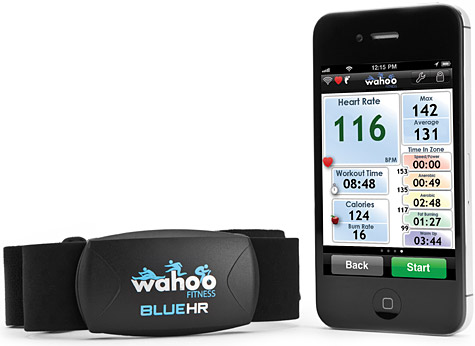A Lifter's Best Friend [PART 1]
Picture courtesy of Crossfit Fanatico
Whether you're a bodybuilder, powerlifter, Crossfitter, Olympic weightlifter or strongman, there are always tools to help you reach your goals more effectively. Aside from perfecting your technique and consistently training hard and smart, the following is a list of the best sidekicks/pieces of technology that can make a lifter's life easier and their training process more fun and effective.
1. A Coach
It doesn't matter if you're new to strength training, or if you're a seasoned lifter. Hiring a coach can eliminate any biases your own program may have. Even if you're well-versed in programming, having another coach adjust your programming variables or monitor your progress can add some objectivity and accountability to your training.
Benefits of working with a coach:
Objectivity, accountability in day to day training
Planned progression --> know when to go hard, know when to back off
Ability to learn from your coach --> pick his/her brain, don't be afraid to ask questions!
2. Cardio/Endurance Training
I'm very well aware cardio has been a controversial and often joked-about topic within the strength training community. Specifically, many lifters believe that performing any amount of endurance training will significantly hold back their powerlifting total and steal their hard-earned muscle mass gains: to the point where any mention of cardiovascular/endurance training in a strength training program can't be taken seriously among strength training circles. I'm not sure if this stems from laziness, a social stigma in strength sports, or just a case of misinformed lifters (I'd like to think the latter).
Without getting too much into detail about endurance and concurrent training in this post, the truth is: cardio will not steal your gains when done at the correct intensity and at the right time in your microcycle.
So how will cardio/endurance training help a lifter? Some benefits include:
Increased general work capacity --> which means less fatigue over the course of a training session, more sets and reps can be done in each training session over time
Quicker recovery in between sets
Great for promoting blood flow and recovery after training --> cooldown
Most importantly: mental health and cardiovascular (heart/blood vessel) health --> cardio can also be a form of active meditation (it is for me)
2.1. Heart Rate Monitor
As I mentioned above, cardio will not steal your gains when done at the right intensity. Similar to how weight on the bar is used to gauge intensity in strength sports, heart rate (beats per minute - BPM) is used to gauge intensity during cardio/endurance training. For a serious strength athlete looking to optimize muscle mass, strength, and power, LOW-INTENSITY steady-state cardio will be the best for maximizing aerobic adaptations without interfering with strength adaptations. Hard 30 minute runs or multiple sets of high-intensity intervals simply detract too much energy that could be used for strength training. Also, the recovery costs are also too high when performed on top of a dedicated strength training routine.
A heart rate monitor either in a watch-form or chest-strap will be useful for helping you pace/limit your intensity during cardio. The number to aim for is 55-70% of your Maximum Heart Rate for anywhere from 30 to 180 minutes (please note these values may change slightly depending on your level of fitness or any endurance sporting aspirations). The goal here is to work well below your anaerobic/lactate threshold; in layman's terms, work at an intensity where you can hold a conversation with the person beside you, and where you don't feel the burn in your muscles, as this may cut into your strength training recovery.
2.2. Bike/Rower
Ah, the bike and the indoor rower, the two things I like to call a lifter's best friend next to barbells and freeweights. The bike and rower are a much more favorable modality of cardio/endurance. training as they have less of an eccentric muscle action component to it compared to running. While running, the ankle, knee and hip joint take much more of a beating due to contact with the ground with every step you make. This stress from having to decelerate your whole body is potentially problematic, especially for larger lifters. Biking and rowing has less of a recovery cost compared to running and won't cut into recovery from your lifting session to a significant degree. However, if running is preferred, I recommend starting off at a slow pace for a short distance, slowly increasing distance as your running technique and joint health improves.
-- In Part 2, I will talk about :
personalized intensity charts for each of your lifts,
the value of good training partners,
as well as other tools to help track your progress and to aid in recovery --
Any questions? Comment below. While you're at it, feel free to give me a follow on Facebook and Instagram.




